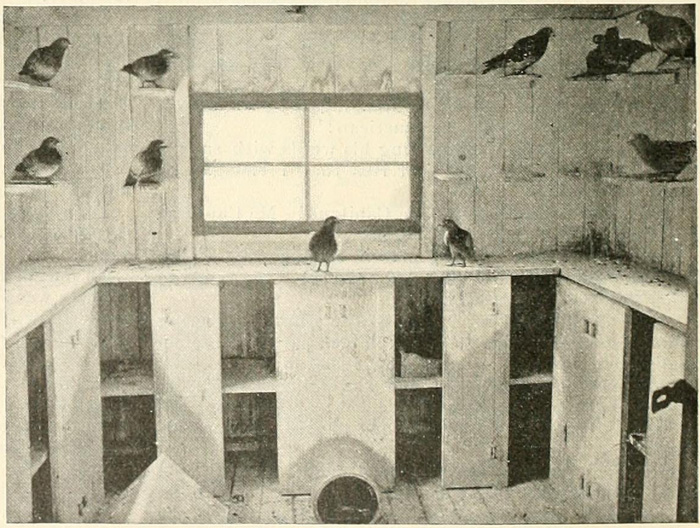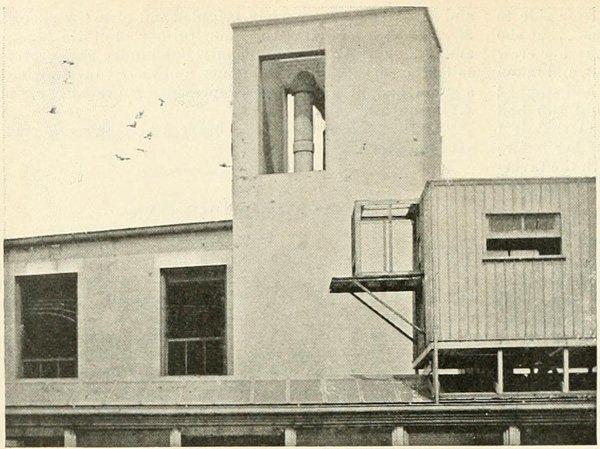We are fond of pigeons here at The New Leaf Journal. So too, it appears, was the late-nineteenth century children’s magazine, Harper’s Round Table. The magazine’s September 17, 1895 issue featured an article titled Carrier-Pigeons by Anne Helme. The article goes into detail about carrier pigeons generally, but my review will focus primarily on its description of a carrier-pigeon house that was once in Manhattan’s Herald Square. The carrier-pigeons, as we will learn, were used by the New York Herald to aid its reporting.
Nomenclature Notes
Before discussing the carrier-pigeon house and carrier pigeons, I want to highlight two interesting phrasing notes from the article. Helme began her article by highlighting the location of the carrier-pigeon house that featured in her article:
In the middle of the square around which the Herald building is built in New York city is a carrier-pigeon house on a level with the roof.
Today, we know the area to which she refers as Herald Square. I suppose “Herald Square” had not fully caught on yet in 1895. For that reason, Helme described the area rather than naming it – “the square around which the Herald building is built in New York city.”
Now note another interesting point in that passage. Instead of writing “New York City,” Helme wrote “New York city.” Why did she not capitalize the “C”? I cannot say for sure, but it is worth noting that the modern New York City came together in 1898 – three years after the publication of the article – when Brooklyn was consolidated into New York City.
The Carrier-Pigeon House in Herald Square
Having noted that the carrier-pigeon house at issue in the article was in Herald Square, Helme described the house itself:
It is a square house, large enough for a good-sized play-house, and has a piazza, a porch fenced in with wire…
You will find a picture of the carrier-pigeons in the Herald Square house below:

Many of the residents of the carrier-pigeon house Square were not yet mature enough to fly around the city carrying important news. However, the house provided the pigeons with room to exercise. Helme explained:
[P]igeons require a great deal of exercise not only in flying, but in walking. Next time you see a flock of pigeons when they light on the ground, or on the roofs of buildings, how they walk up and down for a long time.
Helme’s observation is as true now as it was in 1895. Moreover, I submit that it appears to me that pigeons often prefer walking (and hopping) to flying.
Caring for the Herald Square Carrier-Pigeons
The carrier-pigeons of Herald Square were well-cared for. Helme noted that each of the pigeon residents had a name. In order to ensure that they could be recovered in the event that they were lost, each pigeon was stamped under its wings. “The man whose duty it is to attend to them takes a personal interest in each and every bird.”
When the carrier-pigeons who ventured out for the day returned home, the gentleman who ran the home on Herald Square checked to ensure that no outside pigeons mixed with his flock. Helme wrote: “Pigeons are very homelike in their tastes, and rarely does a day pass that several strange birds do not join them.”

The carrier-pigeons were “fed chiefly on cracked corn.” However, they were more in need of water than food. “The amount [of water] they consume is almost incredible—more than double that of other birds.”
A Pyrrhic Pigeon Present
Before transitioning to the uses of carrier-pigeons and carrier-pigeon stories, Helme took a moment to highlight the “marvellous” home instinct of pigeons. She described it cleverly:
So strongly developed is [the home instinct] that it is impossible to keep the older birds away [from home], and the gift of a pair of old birds is a very thankless one, as they will inevitably fly home the moment they are liberated, although they may be carried miles and miles away, and in a covered basket.
For reasons intrinsic to their utility as carrier-pigeons, veteran carrier-pigeons make terrible presents.
Carrier-Pigeons and Yacht Races
The New York Herald made use of carrier-pigeons to bring news of distant events to headquarters – a fact that was noted in the New York Times as recently as 2007. Helme discussed how the newspaper used its carrier-pigeons to provide up-to-date reports about yacht races:
When a newspaper tug starts down the bay for the yacht-races which are taking place just now, one of the principal articles taken aboard is the big basket filled with carrier-pigeons, and each bird has a brass band on its foot. At different times during the race messages are written on the thinnest of paper and made into small parcels.
Once a dispatch was ready, the on-the-scene reporters sent two carrier pigeons with messages off together. Helme stated that it was thought that the carrier pigeons worked better in pairs.
It took about 30-35 minutes for the pigeons to return to Herald Square from the yacht races “down the bay.” Thanks to the carrier pigeons, reporters at the New York Herald headquarters were apprised of yacht race happenings far sooner than they would have been otherwise.
Helme noted that the carrier-pigeons sometimes returned to headquarters with more than race dispatches:
[I]n some instances they brought back with them strange pigeons who had joined them on the trip, evidently much interested to know the outcome of the yacht-race.
These pigeons did not remain. Helme speculated that they “apparently felt themselves quite out of place with pigeons of such intelligence.” I will suggest that perhaps they had homes to return to too after learning the latest yacht race news.
The Success of Carrier-Pigeons For News Gives Rise to Other Ideas
In light of the success of carrier-pigeons for newspapers, Helme wrote that “the question is now being discussed as to whether it will not be advisable for all ocean steamships to carry them, so that if any vessel were disabled at sea, and, as has often happened, met with no other steamer, by their means word might be sent back to shore.”
Apparently, the idea had been tested. “Five thousand pigeons were put on board the Manoubia, sailing from Saint Nazaire, and at distances varying from one hundred to five hundred miles were liberated. I published a separate article on the events of the Manoubia experiment.
Helme opined that in light of tests of carrier pigeons on ships succeeding “beyond the most sanguine hopes,” it was worth having “these birds on every ship that left the port…”
Coming Home
It was interesting to learn about, and see pictures of, the now-extinct carrier pigeons of the New York Herald in Herald Square. I wrote a follow-up article on the final section of Helme’s piece detailing the story of two very loyal homing pigeons in Manhattan.
(Note: Updated on September 20, 2021, with links to two follow-up articles.)